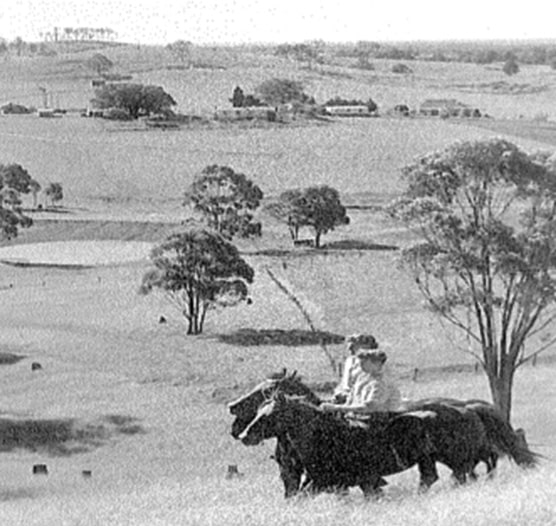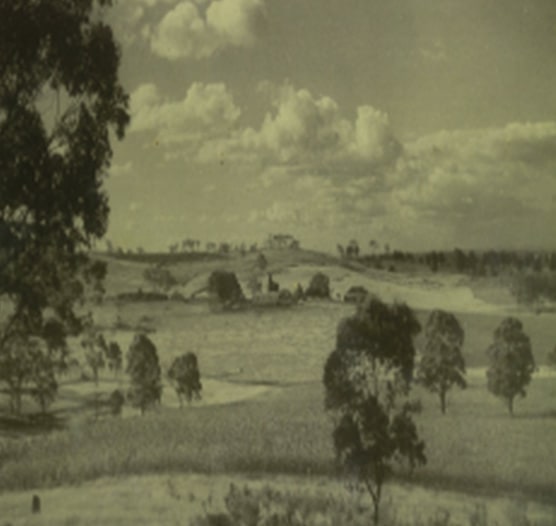A BRIEF HISTORY
CALMSLEY HILL CITY FARM

Pre 1806 – The land was home territory to the people of the Dharuk tribe.
1806 – Land Grant of 80 hectares to John Jamieson (born 1772), a Scottish immigrant, who was the Superintendent of Government Stock. He named the property Coulmesly Hill, but the spelling was later changed to Calmsley Hill.
1809 – a further Land Grant of 120 hectares at Calmsley Hill to John Jamieson.
1823 – a further Land Grant of 40 hectares at Calmsley Hill to John Jamieson. Cattle and sheep grazed on the land.
1826 – 3 huts and a dairy were built on the farm at a cost of £100.

1850 – John Jamieson died. Calmsley Hill farm was taken over by William Jamieson (born 1828), a Grandson of John.
1851 – John Dengate of Coomsley Hill bought the farm for £1,300 and farmed the land until his death in 1886. The land passed to his executors Edwin and Henry Dengate.
1904 – Patrick James Cashman of Fivedock bought the property for £3,000. 1908 – James Clarke of Dulwich Hill bought the property for £3,500.
1909 – James Clarke died, and his executors sold the property back to Patrick James Cashman for £3,145.
1920 – Patrick James Cashman died, and his widow, Mary, sold the farm to Robert McIntyre for £4,500 in 1921.
1929 – John Maurice Garnock, a wool and skin merchant, purchased the farm for £5,700. 1929 – As the Great Depression set in, Garnock sold his equity in the farm to James White of Coonamble for £2,400.

1934 – Calmsley Hill was sold to Edward Dryland Horden, one of the Anthony Horden dynasty of merchants, for £6,450. Two of the trees on the farm, a Peppercorn tree and a Moreton Bay Fig, are believed to have been planted by the Horden family.
1947 – Calmsley Hill was sold to the Big Brother Movement for £12,750. The Big Brother Movement was established in 1925 as a scheme to help young British migrants settle in Australia. The farm served as a reception and accommodation area for groups of up to 40 young men at a time who were trained in farm work. The Big Brother Movement built up the dairy herd, established a piggery, poultry farm, orchard and market garden under irrigation, and built a steel water tower which still exists on the City Farm.
1971 – the land was zoned as open space in the state government’s Sydney Regional Outline Plan.

1972 – the Big Brother Movement sold most of the farm to the State Planning Authority. The land became part of the Horsley Park Services Corridor, bringing electricity, gas and water to western Sydney. Parts of the farm were also leased for dairy farming.
1984 – Fairfield City Council took up the lease on the land and created Fairfield City Farm which conducted educational programs.
1989 – a soil conservation education program was started.
1995 – the City Landcare in Your Own Backyard garden was opened, which is now commonly referred to as the Permaculture Garden.
2000 – Sydney Olympics 2000 Mountain Bike competition was staged at the City Farm.
2009 – City Farm entered lease agreement with Western Sydney Parklands Trust and Calmsley Hill was adopted as the new name of the site.
